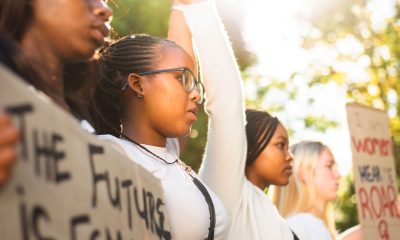Government
VP Harris Unveils $1 Billion African Investment During Historic Continent Visit
Vice President Kamala Harris’ historic trip to Africa continued with the launch of global initiatives on the economic empowerment of women, totaling more than $1 Billion. America’s first Black and female vice president spoke fervently during the trip about how “immensely powerful and moving,” the visit to the Motherland was. She further was moved while visiting Ghana’s Cape Coast Castle, where the vice president reflected on the painful horrors of where heartless slave owners captured their prey.

By Stacy M. Brown
NNPA Newswire Senior National Correspondent
@StacyBrownMedia
Vice President Kamala Harris’ historic trip to Africa continued with the launch of global initiatives on the economic empowerment of women, totaling more than $1 Billion.
America’s first Black and female vice president spoke fervently during the trip about how “immensely powerful and moving,” the visit to the Motherland was.
She further was moved while visiting Ghana’s Cape Coast Castle, where the vice president reflected on the painful horrors of where heartless slave owners captured their prey.
“The horror of what happened here must always be remembered,” Harris stated. “It cannot be denied. It must be taught. History must be learned.”
Harris and President Joe Biden have made outreach to Africa an important initiative of the administration.
In addition to Ghana, the vice president visited Tanzania and Zambia.
In each country, Harris touted investments that would bring economic and gender equity to Africa.
The vice president convened a roundtable with several African women business owners where the discussion centered on how America and private-sector businesses could form a partnership with African nations that would advance gender equality.
“Promoting gender equity and equality is a cornerstone of U.S. foreign policy in Africa and around the world,” administration officials said in a Fact Sheet.
“Advancing the economic status of women and girls is not only a matter of human rights, justice, and fairness—it is also a strategic imperative that reduces poverty and promotes sustainable economic growth, increases access to education, improves health outcomes, advances political stability, and fosters democracy.”
The digital gender gap undermines women’s full participation in the 21st century economy, officials asserted.
Globally, approximately 260 million more men than women were using the internet in 2022—and this gap has increased by 20 million in the last three years.
The gap is especially acute across Africa, where International Telecommunication Union data show that sixty-six percent of women do not use the internet.
To address this disparity, Harris pledged that the administration would continue to work with other governments, private sector, foundations, and multilateral organizations to help close the digital divide, improve meaningful access to equitable digital finance and other online services, and address social norms that prevent women from participating fully in the digital economy.
More broadly, the Biden-Harris administration would continue to promote the economic empowerment of women, the vice president stated.
In support of those goals, Harris announced a series of investments and initiatives that total $1 billion.
She also made a series of announcements to foster women’s political, economic, and social inclusion in Africa, building upon initiatives launched at the U.S.-Africa Leaders’ Summit in December 2022, including the Digital Transformation with Africa (DTA) Initiative.
Harris made clear that education remains key.
She hammered home that point as a message to Republican governors who continue to ban history in school curriculums.
“All these stories must be told in a way that we take from this place — the pain we all feel, the anguish that reeks from this place,” Harris reflected as she traversed Cape Coast Castle.
“And we then carry the knowledge that we have may gained here toward the work that we do in lifting up all people, in recognizing the struggles of all people, of fighting for, as the walls of this place talk about, justice and freedom for all people, human rights for all people.”
She continued:
“So, that’s what I take from being here.
“The descendants of the people who walked through that door were strong people, proud people, people of deep faith; people who loved their families, their traditions, their culture, and carried that innate being with them through all of these periods; went on to fight for civil rights, fight for justice in the United States of America and around the world.
“And all of us, regardless of your background, have benefited from their struggle and their fight for freedom and for justice.”
Activism
Oakland Post: Week of November 26 – December 2, 2025
The printed Weekly Edition of the Oakland Post: Week of November 26 – December 2, 2025
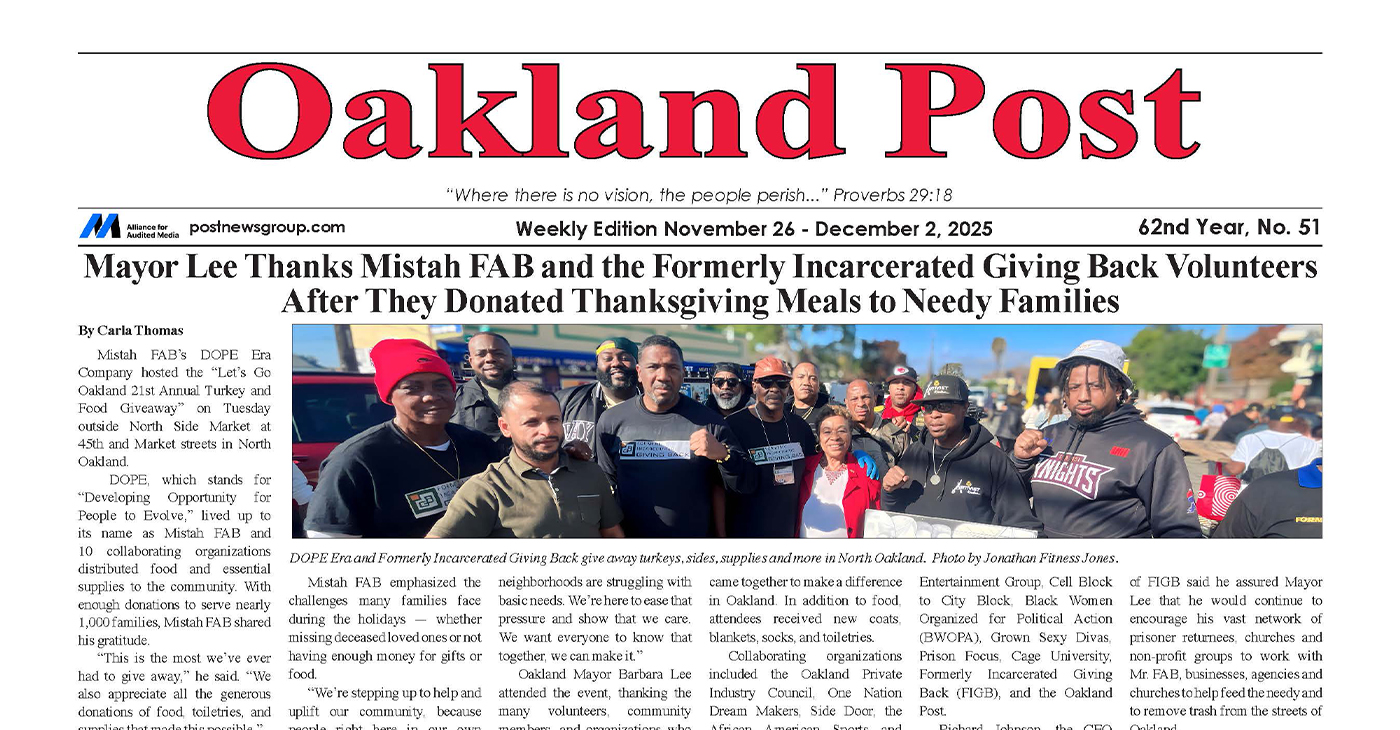
To enlarge your view of this issue, use the slider, magnifying glass icon or full page icon in the lower right corner of the browser window.
Activism
Oakland Post: Week of November 19 – 25, 2025
The printed Weekly Edition of the Oakland Post: Week of November 19 – 25, 2025
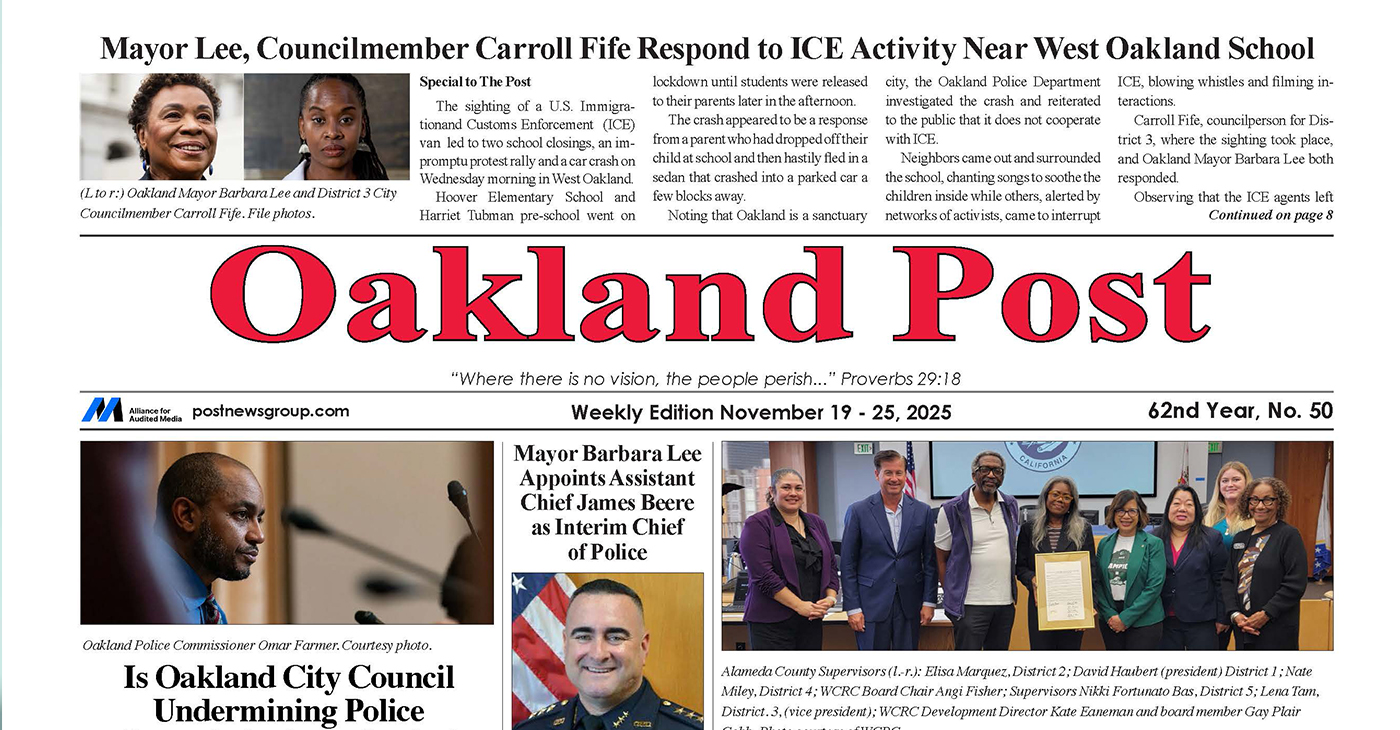
To enlarge your view of this issue, use the slider, magnifying glass icon or full page icon in the lower right corner of the browser window.
Activism
IN MEMORIAM: William ‘Bill’ Patterson, 94
Bill devoted his life to public service and education. In 1971, he became the founding director for the Peralta Community College Foundation, he also became an administrator for Oakland Parks and Recreation overseeing 23 recreation centers, the Oakland Zoo, Children’s Fairyland, Lake Merritt, and the Henry J. Kaiser Convention Center.
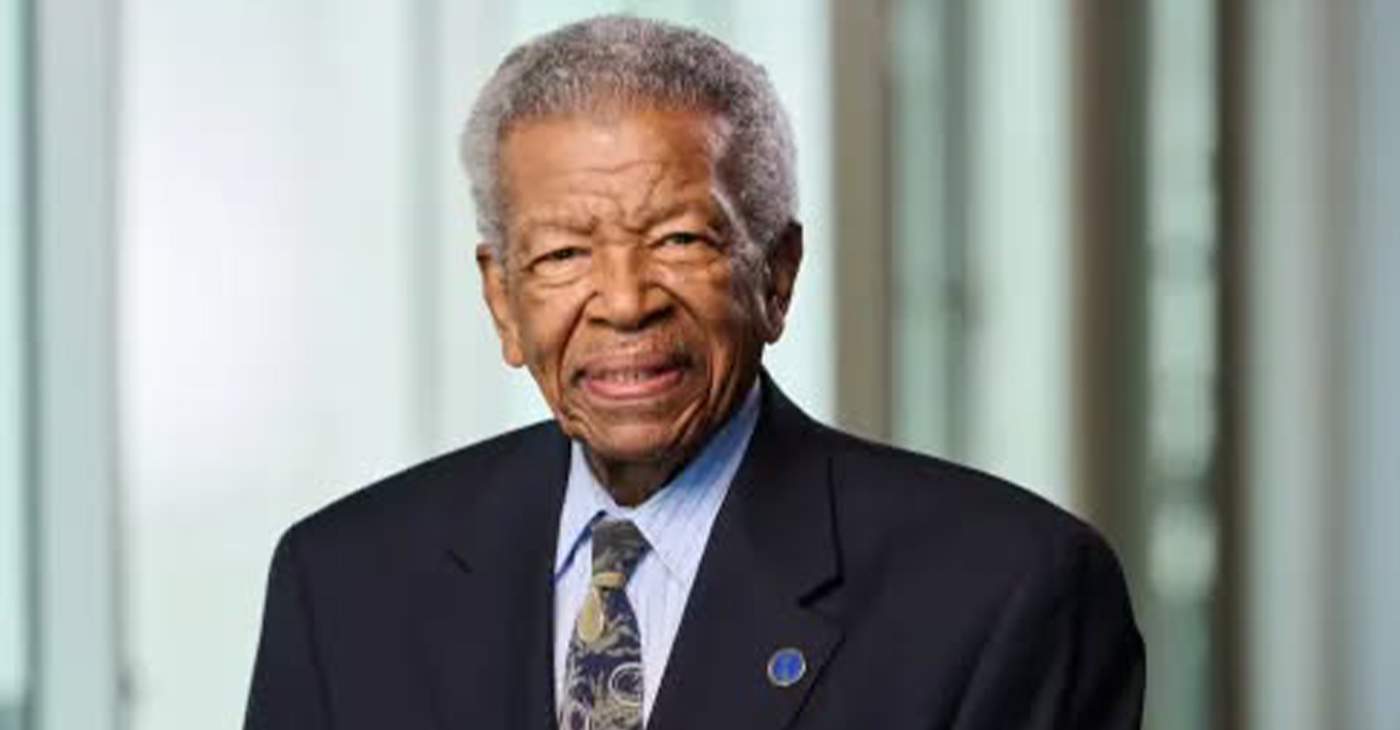
William “Bill” Patterson, 94, of Little Rock, Arkansas, passed away peacefully on October 21, 2025, at his home in Oakland, CA. He was born on May 19, 1931, to Marie Childress Patterson and William Benjamin Patterson in Little Rock, Arkansas. He graduated from Dunbar High School and traveled to Oakland, California, in 1948. William Patterson graduated from San Francisco State University, earning both graduate and undergraduate degrees. He married Euradell “Dell” Patterson in 1961. Bill lovingly took care of his wife, Dell, until she died in 2020.
Bill devoted his life to public service and education. In 1971, he became the founding director for the Peralta Community College Foundation, he also became an administrator for Oakland Parks and Recreation overseeing 23 recreation centers, the Oakland Zoo, Children’s Fairyland, Lake Merritt, and the Henry J. Kaiser Convention Center.
He served on the boards of Oakland’s Urban Strategies Council, the Oakland Public Ethics Commission, and the Oakland Workforce Development Board.
He was a three-term president of the Oakland branch of the NAACP.
Bill was initiated in the Gamma Alpha chapter of Kappa Alpha Psi Fraternity.
In 1997 Bill was appointed to the East Bay Utility District Board of Directors. William Patterson was the first African American Board President and served the board for 27 years.
Bill’s impact reached far beyond his various important and impactful positions.
Bill mentored politicians, athletes and young people. Among those he mentored and advised are legends Joe Morgan, Bill Russell, Frank Robinson, Curt Flood, and Lionel Wilson to name a few.
He is survived by his son, William David Patterson, and one sister, Sarah Ann Strickland, and a host of other family members and friends.
A celebration of life service will take place at Henry J. Kaiser Convention Center (Calvin Simmons Theater) on November 21, 2025, at 10 AM.
His services are being livestreamed at: https://www.facebook.com/events/1250167107131991/
In lieu of flowers, donations can be made to the Euradell and William Patterson scholarship fund TBA.
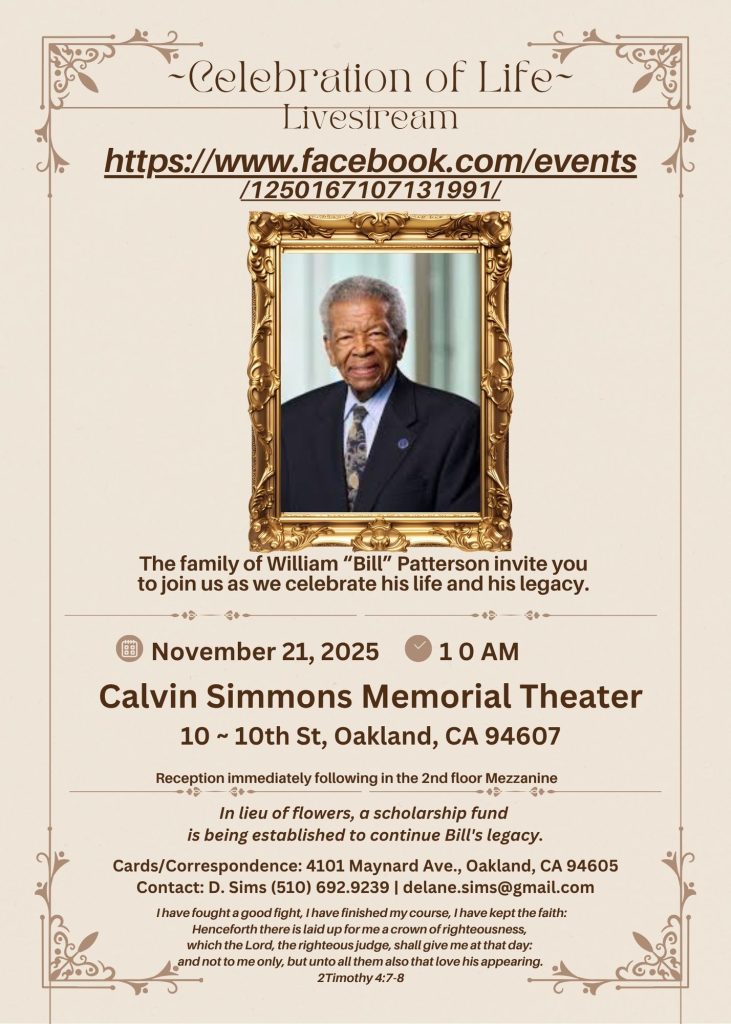
-
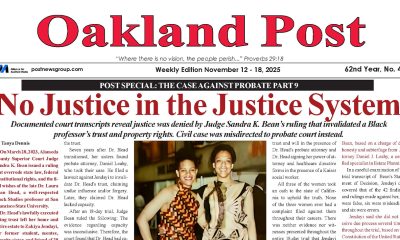
 Activism3 weeks ago
Activism3 weeks agoOakland Post: Week of November 12 – 18, 2025
-

 Activism4 weeks ago
Activism4 weeks agoOakland Post: Week of November 5 – 11, 2025
-
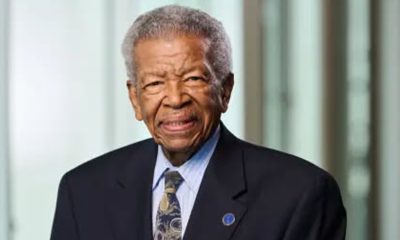
 Activism2 weeks ago
Activism2 weeks agoIN MEMORIAM: William ‘Bill’ Patterson, 94
-

 Activism3 weeks ago
Activism3 weeks agoHow Charles R. Drew University Navigated More Than $20 Million in Fed Cuts – Still Prioritizing Students and Community Health
-

 Bay Area3 weeks ago
Bay Area3 weeks agoNo Justice in the Justice System
-

 #NNPA BlackPress3 weeks ago
#NNPA BlackPress3 weeks agoThe Perfumed Hand of Hypocrisy: Trump Hosted Former Terror Suspect While America Condemns a Muslim Mayor
-

 #NNPA BlackPress2 weeks ago
#NNPA BlackPress2 weeks agoTrump’s Death Threat Rhetoric Sends Nation into Crisis
-
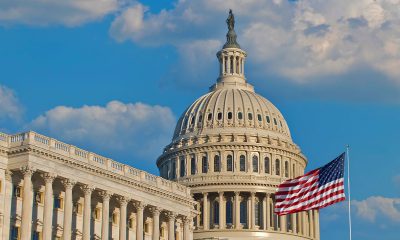
 #NNPA BlackPress4 weeks ago
#NNPA BlackPress4 weeks agoProtecting Pedophiles: The GOP’s Warped Crusade Against Its Own Lies







